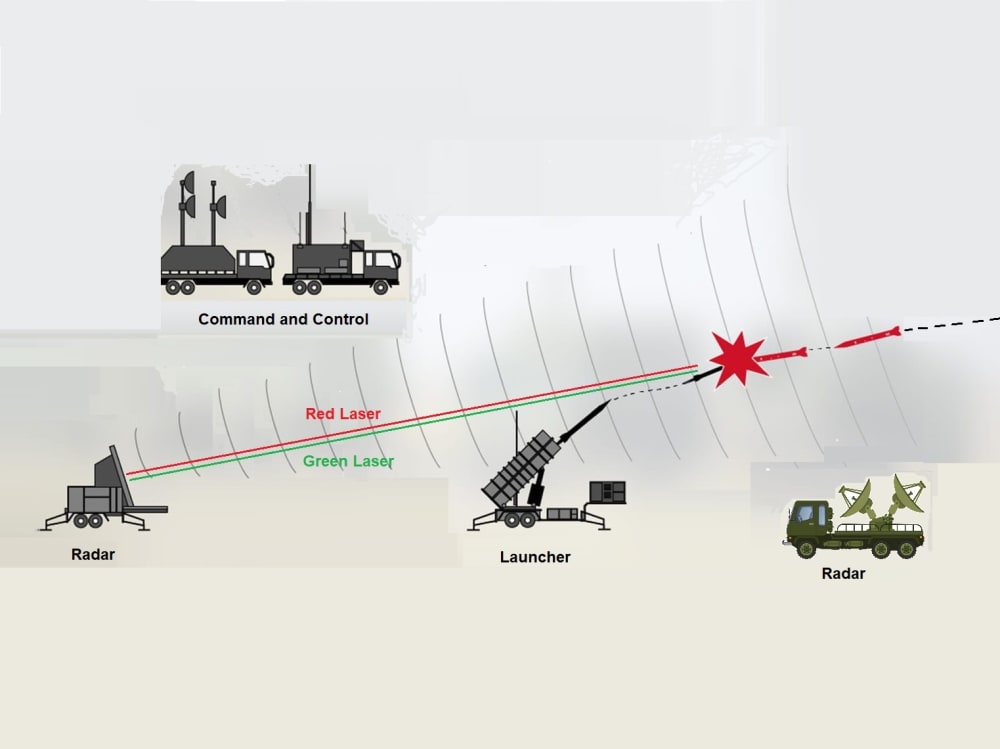PROBLEM: One of the problems with beam scaling systems, as well as command systems, is that the surface-to-air missile must have great maneuverability to intercept an evasive target. As they approach a target, beam-scaling missiles generally must adjust their turns to continue the rate of climb against the target. At high speeds, these spins can exceed the missile's capabilities.
SOLUTION: The use of three radars, two for target tracking, and a third for missile tracking and guidance beam emission, can reduce this problem by providing a more efficient guidance trajectory. Beam scaling guidance is usually more precise and faster reacting than other guidance systems.
SEMI-ACTIVE LAZER LOCALIZATION: Missiles equipped with this homing mode are used in conjunction with a "laser pointer." This indicator is located on the launch platform, and is used to illuminate the target with a laser. The missile's "laser homing head" detects the laser reflected by the target in flight and focuses on it until impact is achieved, and can be used under conditions of high cloud cover or total darkness. Its maximum range is usually in the range of 10 or 15 kilometers. Like command guidance systems, beam-scaling anti-aircraft missile systems are not limited to daylight hours or good weather conditions. In this system, a red laser will be used for sunny day, a green laser for dark days, and both lasers for cloudy days.
TARGET: While the surface-to-air missile rests on the launcher, its seeker locks on the target, estimating the tracking error, and produces control commands independently from the ground. Then the missile is fired, which follows all this data, and searches for its target. In case of semi-active localization, the source of illumination (tracking radar) is located at the command and control, and the anti-aircraft missile also obtains signals reflected from the target. In this case, PID light control will be used to focus the reflected light source.
ADVANTAGES OF RED LASER (635-650nm):
- Visibility in sunlight: One of the main advantages of red laser is its visibility in sunlight conditions. The red light beam is easier for the human eye or a camera to distinguish compared to the green one, making it an ideal choice for outdoor projects; and
- Cheaper: Another advantage of red laser is that its generally cheaper compared to the green one. This can be especially relevant if we're looking for a more affordable option without compromising quality and precision.
ADVANTAGES OF GREEN LASER (520-532nm):
- Visibility in darkness: The green laser is more visible indoors, especially in low-light environments. Its green light beam is brighter for the human eye and cameras, making it easier to see the reference line in dark light conditions or in closed spaces; and
- Large range: The green laser has a longer range compared to the red one. This means it can project a longer laser line before the beam intensity decreases. This feature is beneficial in projects that require measurements at long distances.
Like this entry?
-
About the Entrant
- Name:Guillermo Perez
- Type of entry:individual
- Patent status:none

